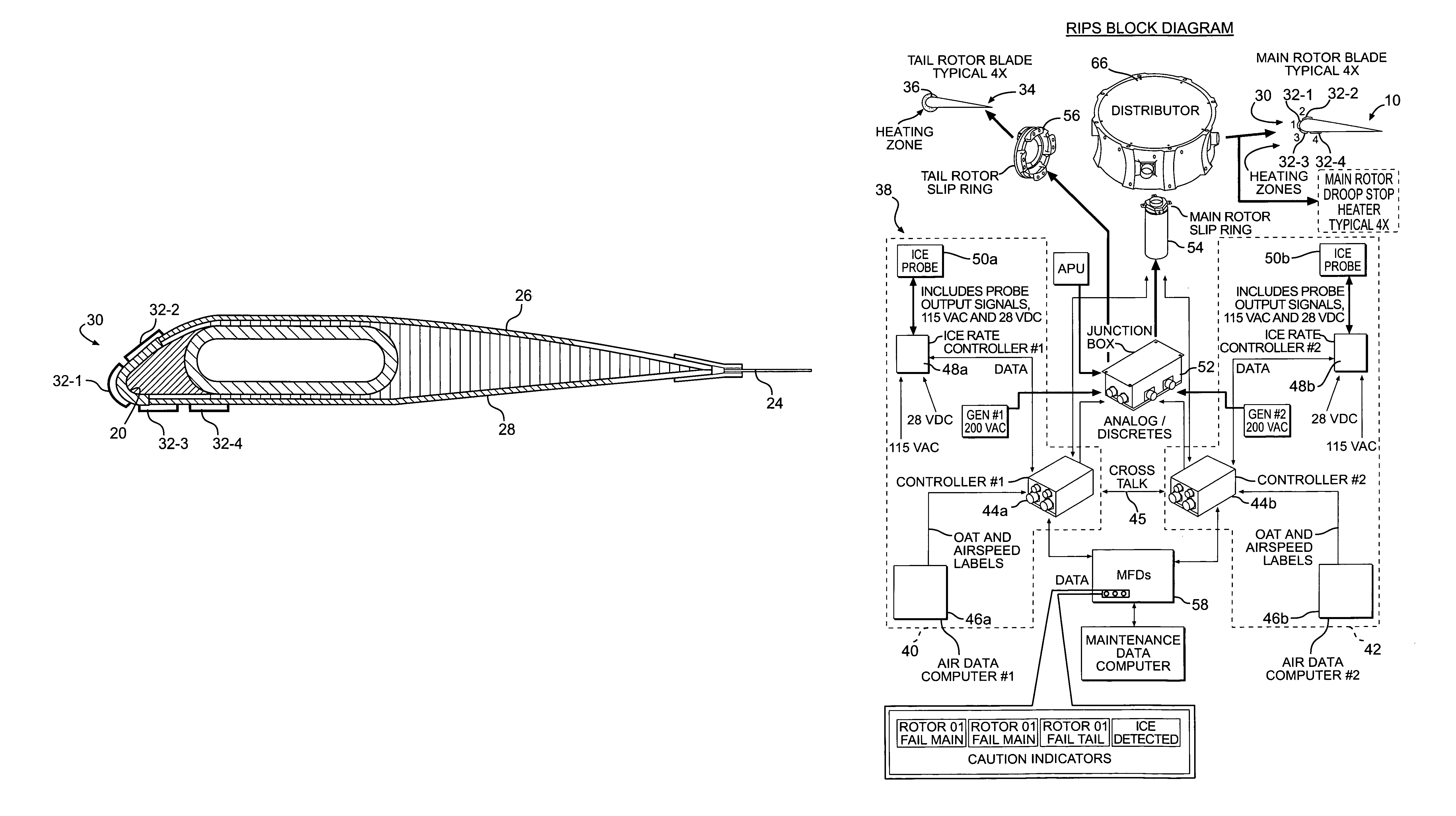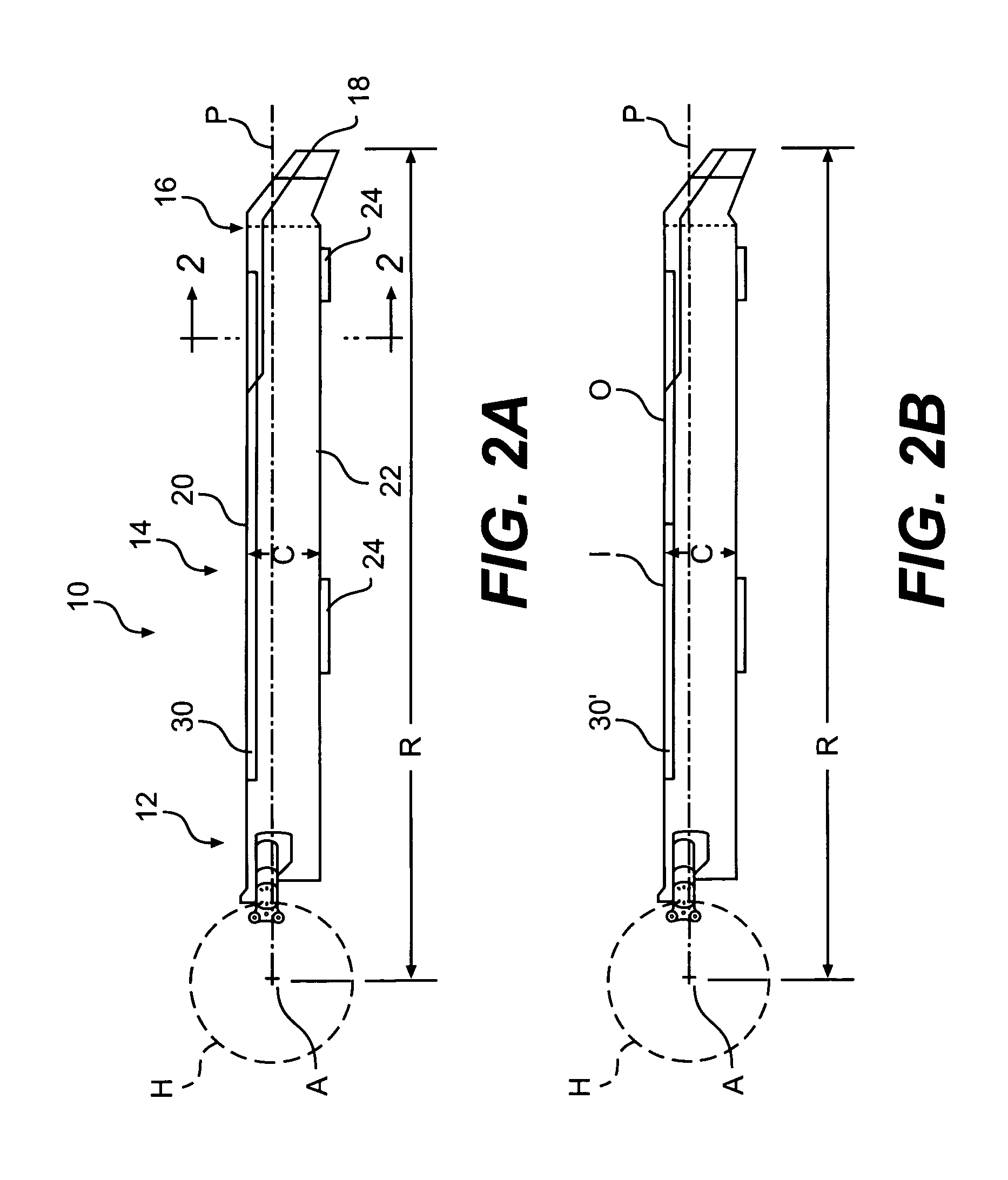Dual-channel deicing system for a rotary wing aircraft
a rotary wing aircraft and rotor system technology, applied in the field of aircraft deicing systems, can solve the problems of reducing affecting the service life of the aircraft, and affecting the flight performance of the aircraft, so as to minimize the likelihood of melted ice refreezing
- Summary
- Abstract
- Description
- Claims
- Application Information
AI Technical Summary
Benefits of technology
Problems solved by technology
Method used
Image
Examples
Embodiment Construction
[0023]FIG. 1 schematically illustrates a rotary-wing aircraft 100 having a main rotor system 102 with rotor blade heater elements 30. The aircraft 100 includes an airframe 104 having an extending tail 106 on which mounts an antitorque tail rotor system 108. The main rotor assembly 102 is driven through a transmission (illustrated schematically at T) by one or more engines E. Although a particular helicopter configuration is illustrated in the disclosed embodiment, other machines such as turbo-props, tilt-rotor, and tilt-wing aircraft will also benefit from the present invention.
[0024]FIG. 2 schematically illustrates an exemplary main rotor blade assembly 10 mounted to a rotor hub assembly H (illustrated schematically) of the main rotor assembly 102 for rotation about an axis of rotation A. The main rotor blade assembly 10 includes an inboard section 12, an intermediate section 14, and an outboard section 16. The inboard, intermediate, and outboard sections 12, 14, 16 define the span...
PUM
 Login to View More
Login to View More Abstract
Description
Claims
Application Information
 Login to View More
Login to View More - R&D
- Intellectual Property
- Life Sciences
- Materials
- Tech Scout
- Unparalleled Data Quality
- Higher Quality Content
- 60% Fewer Hallucinations
Browse by: Latest US Patents, China's latest patents, Technical Efficacy Thesaurus, Application Domain, Technology Topic, Popular Technical Reports.
© 2025 PatSnap. All rights reserved.Legal|Privacy policy|Modern Slavery Act Transparency Statement|Sitemap|About US| Contact US: help@patsnap.com



